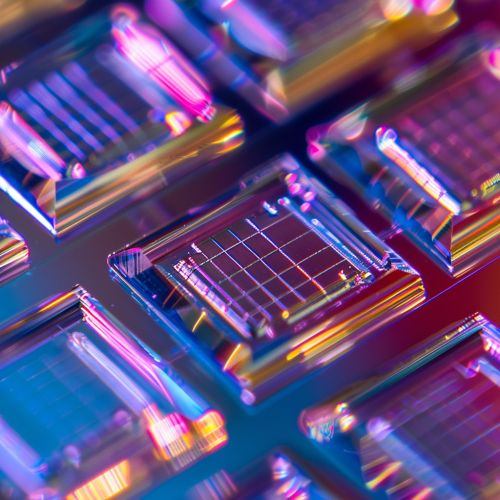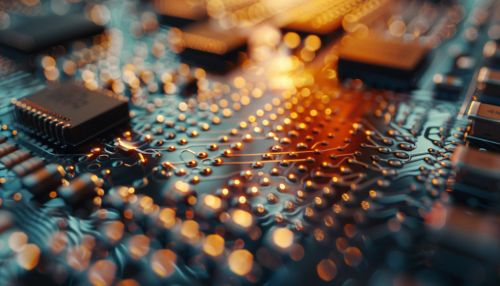Quantum Mechanics in Semiconductor Devices
Introduction
Quantum mechanics, a fundamental theory in physics, describes the physical properties of nature at the scale of atoms and subatomic particles. It is the foundation of all quantum physics including quantum chemistry, quantum field theory, quantum technology, and quantum information science. In the context of semiconductor devices, quantum mechanics plays a crucial role in understanding and predicting their behavior at a microscopic level.


Quantum Mechanics and Semiconductors
Semiconductors are materials that have properties between conductors and insulators. They are used extensively in electronic devices such as transistors, diodes, and integrated circuits. The behavior of these devices is governed by the principles of quantum mechanics.
The quantum mechanical properties of semiconductors are primarily determined by their band structure, which is the range of energy levels that an electron within the material can have. The band structure is a result of the wave nature of electrons, a fundamental concept in quantum mechanics.
Band Structure and Energy Levels
In quantum mechanics, the energy of an electron in a solid is quantized, meaning it can only take on certain discrete values. These allowed energy levels form bands, separated by gaps where no electron energy levels exist. The two most important bands in a semiconductor are the valence band, which is filled with electrons, and the conduction band, which is largely empty.
The energy difference between the valence band and the conduction band is known as the bandgap. The size of the bandgap determines the electrical conductivity of the semiconductor. Materials with a large bandgap are insulators, while those with a small bandgap are conductors. Semiconductors have a bandgap size in between these two extremes.
Quantum Tunneling in Semiconductors
Quantum tunneling is a phenomenon in quantum mechanics where a particle can pass through a potential barrier that it could not surmount according to classical mechanics. This effect is crucial in many semiconductor devices, such as tunnel diodes and scanning tunneling microscopes.
In a tunnel diode, a small bias voltage is applied to the semiconductor, causing the Fermi level to move into the bandgap. This creates a potential barrier for the electrons. However, due to quantum tunneling, some electrons can pass through this barrier and contribute to the current, resulting in a negative resistance region in the I-V characteristics of the diode.
Quantum Confinement in Semiconductors
Quantum confinement is another quantum mechanical effect that is significant in semiconductors. It occurs when the size of the semiconductor is comparable to the de Broglie wavelength of the carriers (electrons or holes). In this case, the motion of the carriers is confined in one or more dimensions, leading to discrete energy levels, similar to those in atoms.
This effect is exploited in quantum dots, nanostructures where carriers are confined in all three dimensions. Quantum dots have unique optical and electronic properties that make them useful in applications such as quantum computing, photovoltaics, and medical imaging.


Quantum Computing and Semiconductors
Quantum computing is a field that applies the principles of quantum mechanics to computation. It promises to revolutionize computing by solving problems that are intractable for classical computers. Semiconductors play a key role in the realization of quantum computers.
In a quantum computer, information is stored in quantum bits or qubits, which can exist in a superposition of states, unlike classical bits that can be either 0 or 1. The manipulation of qubits is achieved through quantum gates, which are implemented using semiconductor devices.
Conclusion
Quantum mechanics provides a powerful framework for understanding and predicting the behavior of semiconductor devices. It explains phenomena such as band structure, quantum tunneling, and quantum confinement, which are crucial in the operation of many electronic devices. Furthermore, the principles of quantum mechanics are being harnessed to develop new technologies such as quantum computers.
